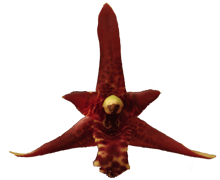Repotting Clinic - Phalaenopsis
See also: Repotting Cattleya and Repotting Ludisia
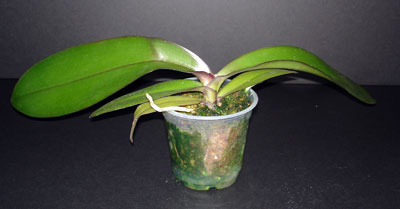
This clinic is an example of the repotting process. We have a young seedling phalaenopsis that is ready for repotting. We can see that the plant has put on some good new leaves since moving to a 4" pot and now has a 19" leaf span.
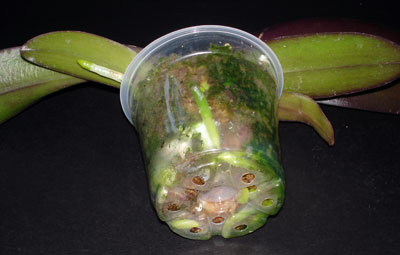
From underneath the roots are clearly visible as they are winding around the drainage holes at the bottom of the pot. This phal was last repotted 6 months ago and with this age of seedling we typically repot every 6 months. At the time of repotting it is now December and the orchid was last repotted in June. It has had a great growth season this past summer and has not initiated a spike this fall. This makes it a candidate for repotting at this time.
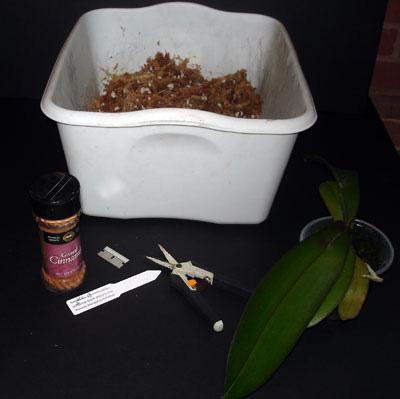
First we gather together the supplies that we need. We have placed some Phalaenopsis Sphagnum Blend into a clean dishpan and rinsed it with water. We then squeezed out the excess water and fluffed the sphagnum leaving it feeling like a damp sponge.
We also have a clean pair of clippers that was soaked in Physan & water (1T/Gal), a razor blade, a label, cinnamon and 5 inch clear pot. The orchid is currently in a 4 inch pot.
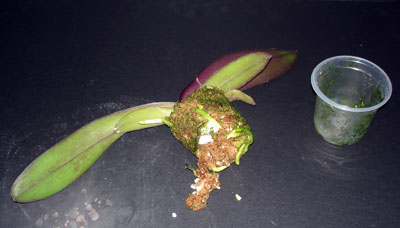
We gently pull the orchid from the pot and get a good first hand look at the roots. They are white, plump and healthy with nice green tips. This is just what we want to see. The upper leaves are considerably bigger than the lower leaves which indicates that this seedling has had a good growth season.
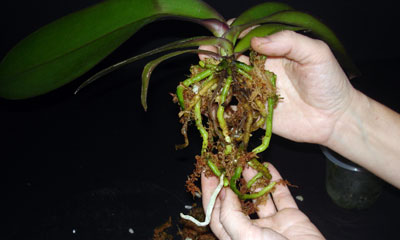
We gently pull the old moss out from around the roots. This moss seems to be in pretty good shape still, after only 6 months. We will repot with fresh mix because we do not reuse old mix.
This is our chance to examine the roots closely and look for any that are brown and squishy. We expect we may find a few, especially in the center of the pot but we hope to not find many.
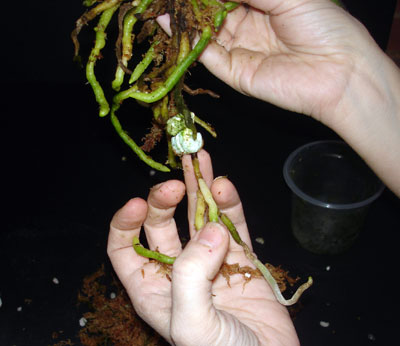
We often find that the phal roots will grow right through the peanuts that were in the pot. They seem to be happy that way. When repotting we will gently break the peanut off from around the root anyway as the disturbance of repotting may cause a breakage in the root at that point.
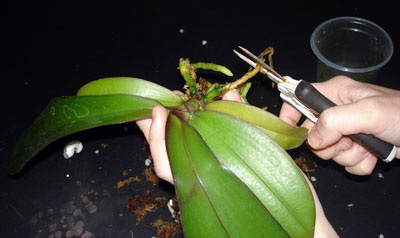
We find that one of the roots is rotted and cut the root just above the rot in the healthy tissue.
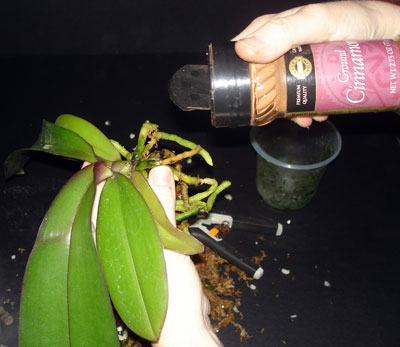
We sprinkle the cut with cinnamon, regular old ground cinnamon from the grocery store. Cinnamon has excellent fungicidal and bactericidal properties and we are hoping to prevent an opportunistic infection developing at the point where we cut.
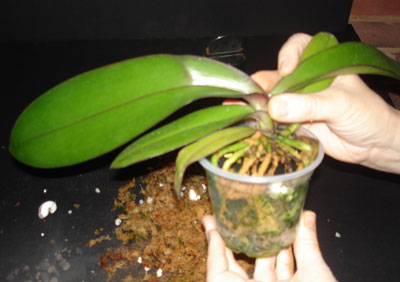
We use the 4" pot that the orchid came out of to judge the size pot we need. While it would just about fit back into this pot the fit is just a little too snug in our judgement. This is a young seedling and we are expecting strong root growth from this plant as it matures to blooming size.

We try the roots in a 5" pot and find that we like the fit. The pot is a tad big so we will use styrofoam peanuts to effectively reduce the pot size.
This particular phal does not have many arial roots but some do. When you repot a phal with arial roots you have two choices. If it has a good root system then leave the arial roots outside the pot if you enjoy them. Or, if the plant is in need of some roots to help support it in the medium because its root system is weak or if you just don't want to see the arial roots then tuck them gently into the pot when you repot it.
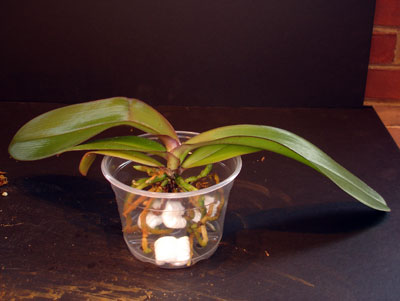
The styrofoam peanuts are set towards the interier of the pot with the intention of reducing the amount of media in the center of the pot that can remain soggy after watering. It is important to only use pure white peanuts and to choose peanuts that are not made of cornstarch.
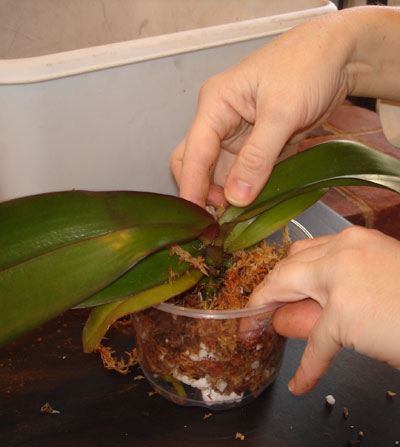
The phalaenopsis sphagnum blend is then tucked in and around the roots. We pack the sphagnum fairly lightly so that it will not stay moist too long in our conditions. Sphagnum moss is infinately adaptable to different growing conditions simply by packing it tightly or loosely. The tighter it is packed the slower it will dry out and the less water it will require.

We can see that the leaf has a small amount of mechanical damage that occurred in the past but there is no sign of any lasting damage other than the small cosmetic scar. We see some red tinge at the edge of the leaves and we expect this progeny may bloom out red or pink having inherited red from one or both of its parents.

We finish our repotting job by putting a new label in the pot. On the front of the label we indicated the date of the repotting, the fact that it was moved up a pot size, and indicate that this plant has not yet bloomed. We will discard the previous label, we show it here for reference. On the back of the label is our own numbering system. This is the 3'rd phalaenopsis compot of 2005, acquired in April.
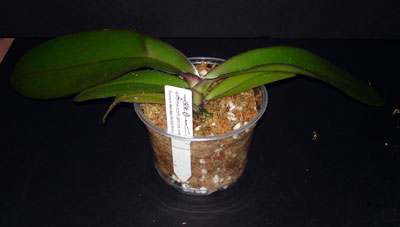
The newly repotted and labeled orchid will be given slightly lower light levels for a few days and then returned to its regular growing space.
